Would you dare to spend a month to a month in a half in temperatures that usually don't exceed -10 degrees Fahrenheit or -23 degrees Celsius? Probably no. But that's just what a couple dozen members of the British, Canadian, and US navies and employees of the Applied Physics Laboratory do in the Arctic.
On an invitation, Reuters photojournalist Lucas Jackson visited the Applied Physics Laboratory Ice Station, a temporary camp built out of plywood on Arctic sea ice, to watch its residents conduct tests on underwater and under-ice communications and sonar technologies.
In his blog, Jackson describes the camp as a support base for the US Navy and exists to understand how best submarines, sonar systems, and underwater communications can work in such a harsh environment.
Let's check out some scintillating PHOTOS taken by Lucas...
PHOTO Album: 2 days in sub-zero Arctic
Image: The sun sets over Arctic ice near the 2011 Applied Physics Laboratory Ice StationIn his blog, Lucas writes: "Flat and white, the ice stretched out in every direction as far as the eye can see, the camp was as foreign to me as anything I have ever seen. It was difficult for me to process what to even photograph and how to get images that even began to show what life was like here."
PHOTO Album: 2 days in sub-zero Arctic
Image: Wind patterns are left in the ice pack that covers the Arctic Ocean north of Prudhoe BayDescribing his initial frustration, Lucas wrote: "I couldn't seem to fit the immenseness of the place into my camera's frame no matter how hard I tried. I photographed the hutches, mess tent (complete with outdoor, open air freezer), researchers working, and a trip to 'mine' ice for fresh water but none of them seemed to capture what the place was like; it was frustrating.
PHOTO Album: 2 days in sub-zero Arctic
Image: A participant pushes a generator towards a refueling station"I had to make sure that if I was going inside for less than 30 minutes or so I had to leave my cameras outside in the cold or place them inside my bag zipped up near a heater until they were the same temperature as the room"
PHOTO Album: 2 days in sub-zero Arctic
Image: A man urinates into a box as the sun sets over Arctic iceUsing a digital 'Deep Siren' tactical messaging system and a simpler underwater telephone, officials from the Navy's Arctic Submarine Laboratory at the camp were able to help the USS New Hampshire submarine find a relatively ice-free spot to surface and evacuate a sailor stricken with appendicitis.
PHOTO Album: 2 days in sub-zero Arctic
Image: The moon rises over Arctic ice near the 2011 Applied Physics Laboratory Ice StationSlowly acclamatising with his sorroundings, Lucas began understanding the paradise he was on.
"I looked through all of my take and found roughly a dozen of these frames that I had ignored earlier and put them together to make a collection of landscapes that I felt actually did a good job of showing that the only thing discerning in this landscape is the subtle variations of the wind on the snow or the different shapes of ice chunks forced up when giant ice sheets grind together," he wrote
PHOTO Album: 2 days in sub-zero Arctic
Image: A US Navy sailor on the bridge of the USS Connecticut after it surfacedAction lay ahead of Lucas on Day 2 of his camp visit when he was flown via helicopter to watch the Seawolf class submarine USS Connecticut force its way through 3-4ft of ice to pick up the secretary of the navy and a congressional delegation that had flown up to inspect the Arctic project.
PHOTO Album: 2 days in sub-zero Arctic
Image: Employee Keith Magness uses a chainsaw to cut through ice to access the hatches of USS ConnecticutDescribing the action over ice, he wrote: "The APLIS crew quickly began to use chainsaws to cut through the ice in order to open the hatch that the congressional delegation would enter through. Shortly after the surfacing we were flown to another submarine that had surfaced in shallower ice for our overnight trip."
PHOTO Album: 2 days in sub-zero Arctic
Image: Navy sailors watch their sonar screens as they work in the control room of USS New HampshireOnce inside the submarine, Lucas dispelled another notion. He had been told that he would have duck his way around the boat. However, inside the USS New Hampshire, a Virginia class submarine, he didn't have to do so.
"The dive away from the ice was quite exciting as the boat went down at a very steep angle. I have spent a lot of time on boats and the feeling of sinking was one that I am wholly unused to. Other than the descent it was difficult to discern that we were even in the ocean since the ride was so smooth."
PHOTO Album: 2 days in sub-zero Arctic
Image: A helicopter flies over Arctic ice towards the Applied Physics Laboratory Ice StationSumming up his trip, Lucas wrote: "In roughly 60 hours on the ice I had slept a total of about 8-10 hours and taken a few thousand photographs of things that I will probably never see again."
"I had been warm most of the time (except my face), seen one small case of frostbite on someone else, seen 0 animals, and was told that at one point the spot I was laying on while on top of a submarine was exactly where the nuclear reactor was (I moved.)"
"I met dozens of amazing people both at the ice camp and in the submarine. As I sit in my apartment now writing this it seems like a strange dream that this had actually happened, luckily I have my pictures to prove it."



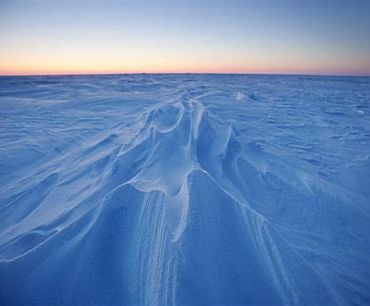
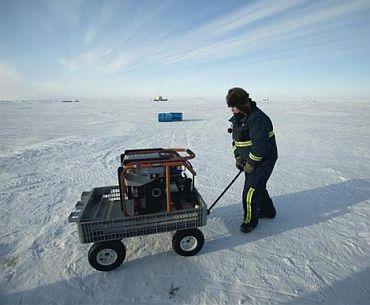
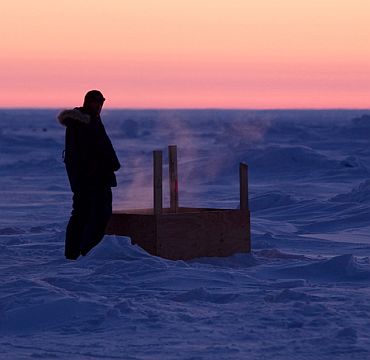
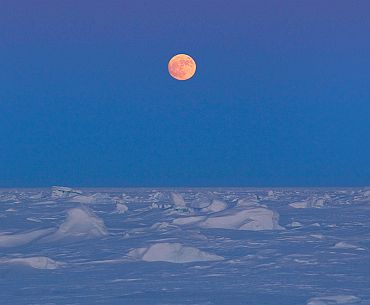
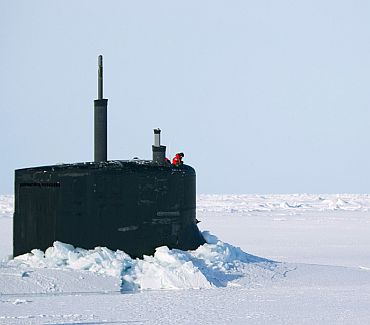
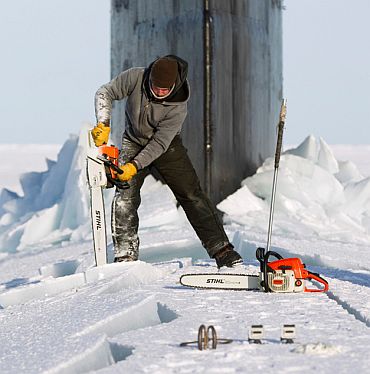
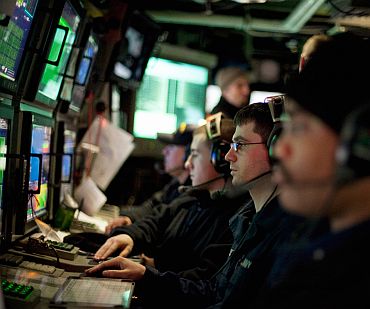
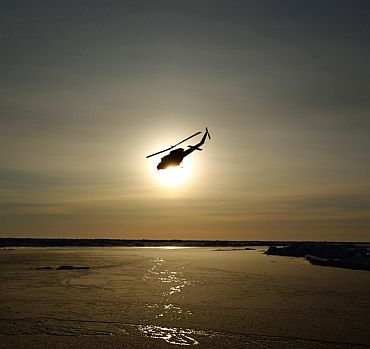
article